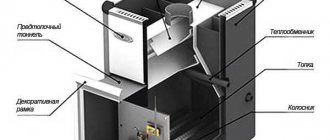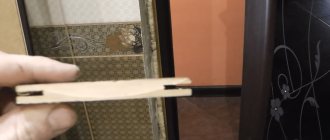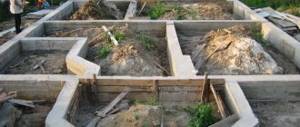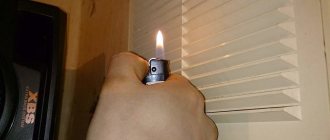When carrying out construction work and repairs, it is often important to use universal connecting elements. A handy alternative to small nails and glue is a staple gun. Depending on the model, the device can be used for a wide range of jobs.
What is a construction stapler?
For upholstering furniture, attaching insulation, installing greenhouses and many other works, professionals use a construction stapler, which is a more powerful analogue of a stationery device. The device, using a certain energy, shoots staples or nails that connect objects. Hence the other names for the device - staple gun, staple gun or staple gun. In addition to power, a professional device differs from an office device in the type of processing of the edge of the staple. The office worker bends it, and the professional one drives the ends into the base like nails.
Construction stapler device
There are several types of professional construction stapler, which differ in the type of energy source used, power, speed and range of staples used. Despite all the differences, most units have a similar design, which includes:
- body made of metal or plastic;
- store for fasteners;
- impact mechanism of various designs;
- trigger;
- rammer;
- safety device against accidental shots;
- tip;
- impact force regulator.
How does a construction stapler work?
Regardless of modification, the stapler tool connects various objects and materials with each other using a staple or nail fired at high speed. The differences are in the length of the fasteners used and the hardness of the working surfaces:
- Staples are loaded into a special magazine, which are tightly fixed by the compartment body.
- The body of the device is pressed tightly against the working surface.
- Using a mechanical spring or compressed air, the fastener is driven from the tip with a force applied by the user to the handle, securing surfaces or objects together.
Advantages
The key advantages include:
- it takes less time to complete the work;
- will fasten materials where it is inconvenient to work with a hammer (due to limited free space);
- provides reliable fastening. Nails, for example, have a targeted effect. The staples are fixed over a larger area;
- The pins are located directly in the tool, in a special cassette. This is convenient because you do not need to constantly carry nails with you;
- fastening materials with a stapler is not only convenient, but also safe, which cannot be said about working with a hammer;
- The tool is easy to use with one hand. At this time, the material being fastened can be held free;
- staples do not rust;
- ease of maintenance.
In addition to the usual hammer and glue, today materials are easily joined in other ways. One of them is the use of a construction stapler.
Types of construction stapler
There are several classifications of construction staplers depending on a number of parameters. By type of use there are:
- The household one
has a plastic body and low power. Its use is limited to occasional use in everyday life. - A semi-professional
large stapler can be distinguished by its higher quality metal body and advanced functionality. Such devices are purchased for repairs and minor construction work. - A professional
unit with a metal body, high power and a large selection of settings is used by repairmen, furniture makers and other specialists.
Another generally accepted classification is the division by driving force:
- Mechanical
is the simplest option, analogous to clerical. - The electric one
has a similar structure to the previous one, however, to work you need to use electricity rather than physical force. There are construction staplers that are battery-powered or powered. - A pneumatic
device uses compressed air pressure as a driving force.
Pneumatic construction stapler
The most powerful and productive is considered a pneumatic stapler, powered by a connected compressor:
- The staples are supplied using compressed air pressure.
- This device has significant dimensions due to the connected compressor, so it is used mainly in furniture production.
- The average productivity is 50-60 staples or nails per minute, which is significantly ahead of mechanical and electrical counterparts.
- The device can work with the largest range of fastening tools and their length up to 10 cm.
Mechanical construction stapler
When you need little productivity, you can purchase a simple mechanical stapler that works using the physical strength of your hands. By pressing a special handle, the user compresses a spring, which can be of a coiled or spring type. As it straightens, it transfers the force to the bracket, which shoots out of the tip. The construction mechanical stapler has the following advantages:
- light weight;
- small dimensions;
- low price.
The main disadvantages include:
- the need to exert physical effort, which is tiring during large volumes of work;
- low productivity no more than 20-30 staples per minute;
- a small number of elements that fit into the store.
Electric construction stapler
An analogue of a mechanical device is an electric stapler, in which energy is supplied to the spring using an electric current. Thus, the user does not need to make any effort to operate. There are two types of such devices:
- Rechargeable
. They are convenient without a cord and the ability to work where there is no power supply. - Network ones
that connect to a standard 220 V power supply network.
The advantages of this type of device are:
- high productivity up to 50 staples per minute;
- no need to exert physical effort;
- wide range of fasteners used;
- various operating settings.
The disadvantages include:
- Bulky. Battery-powered models weigh on average 1.5-2 kg, which is inconvenient for long-term use. On networked appliances, the power cord may be in the way.
- The need for a power supply to operate or recharge the battery.
- High cost and expenses for paying utility bills. The average construction electric stapler consumes about 1.5 kW per hour.
How to choose a construction stapler?
Due to the wide variety of models, it is important to understand which is the best construction stapler to choose for certain jobs. When purchasing, you should consider the following parameters:
- Type of driving force. For occasional use, a mechanical model is sufficient. If you often need to carry out repair work, then you should choose an electric unit, but for professional production they often choose pneumatics.
- Electrical protection class for electric models.
- Case material. Plastic is a cheaper material, while metal is stronger and more durable.
- The number of staples placed in the store.
- Method of inserting the fastening tool. More reliable models are those in which the staples are simply inserted into the magazine, and are not pushed in with its help.
- Device dimensions. This is important both for long-term work and for fastening in inconvenient places.
- The presence of a blow power regulator.
- The accuracy of the blow produced, which depends on the width of the tip.
- Maximum and minimum length of staples used.
- The presence of a lock to prevent accidental firing of the staple.
- Rubber handle protection for more comfortable use of the device.
Staples for construction stapler
Depending on the materials being fastened and the chosen model, you can use different types of staples for a construction stapler. They can be made of different materials:
- aluminum;
- copper;
- steel;
- galvanized or stainless steel.
Made in different shapes:
- U-shaped;
- U-shaped
- T-shaped;
In addition to the specified parameters, the sizes of the selected fastening tools also differ. The minimum length is 4 mm, while there are professional staples with a pin length of 10 cm. The rigidity of the elements also differs, which varies depending on the hardness of the surfaces being fastened. There are elements with sharpened legs and blunt edges.
Subtleties of choosing a mechanical stapler
The devices have a twisted or leaf spring. If you plan long-term work, it is better to choose the latter type (they are softer, with virtually no recoil).
Criteria that need to be taken into account:
- It’s good if the body is collapsible. This will make it possible to monitor the condition of internal parts;
- handle location. It should not protrude far beyond the body;
- operating modes of the punching mechanism. It all depends on the material being nailed. To cope with pine, the minimum value is enough. Chipboard or plywood will already require significant effort;
- Is there a "double whammy"? This is a function that is activated when joining solid materials. The mechanism hits the unclogged bracket twice.
It’s good if the functionality provides for “stressless release” or jamming, which increases the safety of the device.
Construction staplers can be refilled in two ways, where everything depends on the characteristics of the store. The ones that open are more convenient. Here everything is similar to the stationery variety: the spring is raised, a block with staples is placed, and the spring is closed.
Pull-out magazines are not much more complicated. Charging looks like this: the latch is released, the spring is taken out, the block is installed, the spring is returned and fixed in the damper.
Rating of construction staplers
When understanding how to choose a construction stapler, the advice of professionals will come in handy. The masters included the following brands in the rating of the best models:
- Bosch HT 14
is a mechanical type device for fastening soft or thin materials. Cost – $17. - Stanley 6-TR250
is a mechanical device with an ergonomic D-shaped handle and adjustable impact force. Cost – $29. - Hammer HPE20
– electric construction stapler for nails or staples with a cord length of 2 m. Cost – $31. - Metabo DKG 80/16
is a pneumatic device with reduced vibration levels. Cost – $121. - Ryobi R18N16G-0
is an electric battery model, the main task of which is driving nails during construction and installation work. Cost – $212.
How to set up a construction stapler?
Any construction tool requires tuning in the following cases:
- before first use;
- if you start working with a material of a different density;
- in the case where the staples do not completely enter the material.
Depending on the model of the device, the rules for how to adjust a construction stapler will differ:
- On mechanical coil spring models, the adjustment screw is located at the top of the housing. Adjustment occurs by turning the screw and testing the material.
- In devices with a spring spring, the regulator is located under the handle. The progress of work is similar.
- Electric and pneumatic models are equipped with automatic regulation using a control panel.
terms of Use
Using the stapler is very simple: you just need to point it at the material that needs to be secured to the selected surface and pull the trigger. In this case, the tool must be pressed tightly against the object. The activated mechanism will drive the bracket and lock it in place. The characteristic impact sound will be clearly heard. That's the whole operating principle in a nutshell. There is no particular recoil when firing, but one should take into account the force with which the mechanism drives the fastening element into the material.
http:
The main difference between a construction stapler and a conventional one is the power of the mechanism. The construction model is capable of driving a bracket even into wood. It is with the help of such powerful tools that they fix the upholstery of sofas, as well as secure plastic film on the wooden frames of greenhouses.
How to use a construction stapler?
The basis for using a staple gun is knowing how to insert staples into a staple gun. A detailed description of the process is provided in the instructions for the purchased model. However, for most modifications, the procedure for loading a staple gun with staples will be approximately the same:
- Put the device on the fuse.
- Open special compartment
- Pull back the retaining spring and insert the staple block.
- Close the store.
- Remove the safety lock.
- Take a few test shots.
After proper charging, the device needs to be adjusted. The shot is fired only when the tip is pressed tightly to the surface. The gun does not move until the bracket is fully secured. The rules for safe operation of the device include several points:
- You should always put the device on fuse after work.
- Do not point the staple gun at yourself, other people or animals.
- For electric tools, you should follow the rules for using electrical appliances.
Why doesn't a construction stapler work?
Even with proper operation, situations occur when the device does not work properly, that is, it does not fix materials or does not do it well enough:
- The answer to the question why a construction stapler bends staples lies in the incorrectly selected rigidity of the fastening material or its length in comparison with the hardness of the surface.
- If the staples are not completely clogged, then the tool just needs to be adjusted.
- When there are staples in the store, but the device does not hammer them in, the pressure spring should be lubricated.
- When the device issues several staples at once, the striker of the impact mechanism must be repaired.










